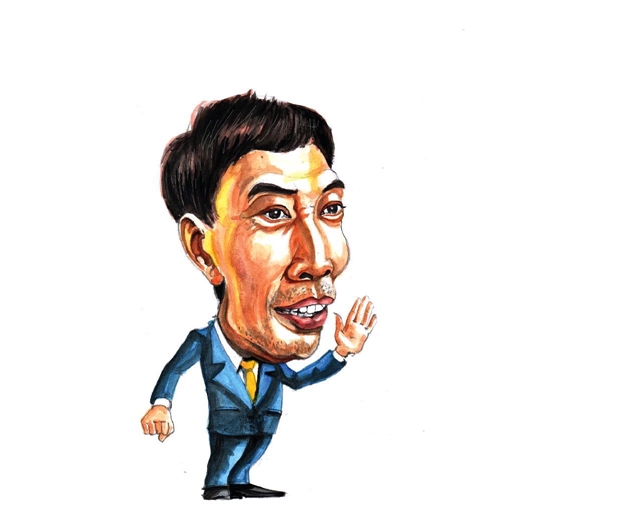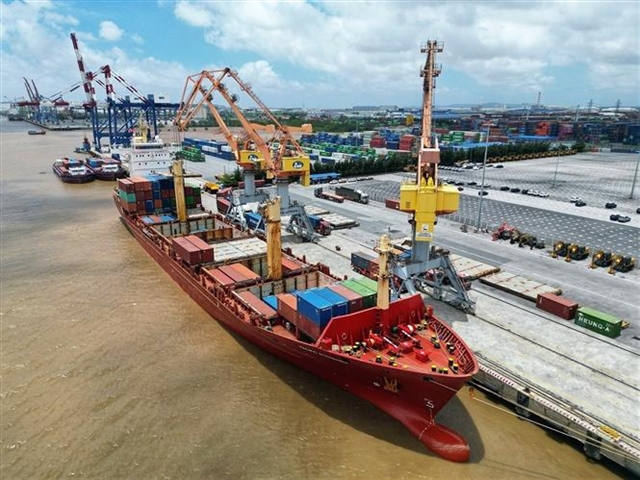 Economy
Economy

 |
Võ Trí Thành*
Việt Nam’s Gross Domestic Product (GDP) growth rate was estimated to reach 5.05 per cent in 2023, the General Statistics Office (GSO) has announced. Is the rate high or low? Is this a satisfactory result for a country called “the Southeast Asian export and manufacturing hub”? To answer the question, we have to make some comparisons.
First of all, the latest figure shows a remarkable slowdown from the expansion of 8.02 per cent in 2022 when the economy rebounded strongly from the economic disruption caused by the COVID-19 pandemic during the second half of 2021. It could be said that the strong recovery in 2022 after the Government lifted all of its COVID-19 pandemic lockdown measures is foreseeable especially when the economy only expanded at 2.91 per cent in 2020 and 2.58 per cent in 2021.
In 2023, economic growth momentum has moderated significantly in the first three quarters, reflecting the impact of weakening growth in industrial production, especially manufacturing, and exports.
In the year, the global economy experienced greater turbulence than expected, with the US Federal Reserve and central banks increasing interest rates to curb inflation, the prolonged Russia-Ukraine war, and the Gaza conflict, which resulted in a fall in global demand.
As one of the most open economies in the world, Việt Nam felt the pinch in the first quarter of 2023. The gross domestic product (GDP) growth during January – March slowed to 3.3 per cent year-on-year, the second lowest rate in 13 years. The rate in the first half of the year only inched up 0.4 percentage point to 3.72 per cent, as compared to 6.42 per cent of the same time in 2022.
The economic slowdown in the US and EU, which together account for 42 per cent of Việt Nam's total goods exports, has led to a significant decline in exports during 2023.
Only until the fourth quarter of 2023 has the GDP growth picked up pace, reaching 6.72 per cent as exports to mainland China – the world’s second biggest economy – started to show a turnaround after considerable weakness in early 2023. Despite stronger than the expansion of 5.47 per cent in the third quarter and 4.25 per cent in the second quarter, the growth in the fourth quarter was not enough to help the economy meet the target of 6.5 per cent set for the whole year by the National Assembly.
 |
| Việt Nam posted an export turnover of US$355.5 billion in 2023. VNA/VNS Photo Tuấn Anh |
Though below the target of 6.5 per cent and even below average annual growth of 5.87 per cent during the previous decade, the whole year figure is still a positive result, “putting Việt Nam in the group of the fastest growing economies in the region and in the world” as stated by the GSO.
According to experts and international media, Việt Nam's economy has shown more or less resilience, stability, and readiness to overcome difficulties to become one of the economies with positive growth rates in the world.
In its report on World Economic Outlook, the International Monetary Fund (IMF) forecast the country’s GDP growth rate in 2023 at only 4.7 per cent. The average rate of ASEAN-5 (Indonesia, Malaysia, the Philippines, Singapore and Thailand) was projected at 4.2 per cent.
The country’s 2023 GDP growth rate is also higher than the World Bank’s forecast of growth in developing East Asia and Pacific at 5 per cent in its East Asia and the Pacific Economic Update October 2023.
In the context of the global downward trend, the figures reflected great efforts of the entire political system, the people and the business communities, which have helped Việt Nam successfully navigate the challenges and carve out a solid recovery.
The Party, State and Government took drastic measures to spur economic growth, as well as stabilise and improve people’s livelihoods.
A lot of decrees, resolutions and decisions were issued from January to November. The highlights included policies on reduction of lending interest rates, stabilisation of the foreign exchange market, acceleration of public investment, implementation of credit packages to support enterprises, tax and land-use fee cut and extension of payment deadlines, and visa relaxation for visitors.
Additionally, an array of external and international integration activities were effectively carried out by the Government, particularly the implementation of high-level agreements, which have helped boost trading with major partners.
Besides exports, growth drivers for 2023 is domestic consumption which was boosted by strong tourism recovery and public investment.
It can be said that public investment disbursement was the most important factor that contributed to the economic growth in 2023.
By the end of November 2023, the amount of public investment disbursed reached more than 65 per cent of the plan assigned by the Prime Minister, 6.77 percentage points or VNĐ123 trillion higher than the figure of the same period in 2022.
However, the weaker-than-expected recovery is a warning sign that Việt Nam would likely to fail to meet the average growth rate target of the 2021-25 period of 6.5 per cent.
If Việt Nam wants to realise the five-year socio-economic development targets, the Government, ministries, sectors, and localities must exert all-out efforts this year as 2024 is crucial for the realisation of the five-year plan.
As calculated, if even GDP in 2023 was 6 per cent, the growth rate of GDP in 2024-25 would have to be 8 per cent so that the average growth rate of the five-year period would reach 6.5 per cent.
Although the scenario is impossible, we still have reasons to believe in a brighter future for 2024.
In the domestic market, growth momentum for this year continues to include exports with the diversification of products and markets; public investment, especially in infrastructure as many localities’ master plans were approved; and foreign director investment increase thanks to the upgrade in bilateral relationship with major countries like the US and Japan. The relation upgrade would likely turn Việt Nam into an FDI attraction destination with more high-tech, high-quality projects from advanced economies.
In the global market, leading central banks are expected to begin cutting interest rates over 2024 as falling inflation fuels predictions among investors and economists that prices are under control. This would create more room for the Vietnamese Government to adjust monetary policies towards supporting more businesses.
Fitch Ratings predicted the Vietnamese economy will expand 6.3 per cent in 2024 and 7 per cent in 2025 on the back of the domestic fiscal and monetary policies.
Meanwhile, the Asian Development Bank (ADB) and the International Monetary Fund (IMF) forecast the country’s GDP growth next year at 6 per cent and 5.8 per cent, respectively.
Under a resolution on socio-economic development adopted at the sixth session of the 15th National Assembly, Việt Nam targets 6-6.5 per cent in GDP growth in 2024.
To reach growth targets for each quarter and the entire 2024, it is necessary to keep economic, political, and social stability to enhance investors’ trust; further improve investment and business environment; properly control inflation; bring into play fiscal and monetary policies to facilitate businesses’ credit access; step up public investment; invest in human capital so that the labour force can master new technology and can implement innovation; and tackle bottlenecks for the land, real estate, construction, tourism, and capital markets.
With all-out efforts and unwavering determination in making structural reform and completing legal frameworks, Việt Nam will have fundamental foundation to make a breakthrough in the next five-year period.
*Võ Trí Thành is former Vice President of the Central Institute for Economic Management (CIEM) and a member of the National Financial and Monetary Policy Advisory Council. A doctorate in economics from the Australian National University, Thành mainly undertakes research and provides consultation on issues related to macroeconomic policies, trade liberalisation and international economic integration. Other areas of interest include institutional reforms and financial systems. He authors the Việt Nam News column Analyst’s Pick.